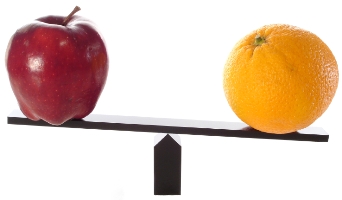The Passive House Difference

Comparing apples to oranges...
The highest levels of many other energy standards, national and international, seem to come close or at least be comparable to Passive House in terms of their energy use requirements, but beware because the difference is in the details.
Energy measurements.
Energy use is typically measured per area and time, or commonly, kWh/m2yr. The reference area used for this measure is key: the larger the reference area, the smaller the energy use appears to be.
Most standards dealing with energy use the gross or total area of a building; Passive House takes only the usable living area into account.
The Passive House Standard is measured with a significantly smaller reference area than most other standards: storage areas and areas with low ceilings are only partially taken into account, while stairways, unheated areas and other "unusable" areas are not included at all. Why? It just makes to exclude areas from the calculation that cannot be fully used. This practice makes Passive House measurements more conservative than others.
Most standards do not take household electricity use into account when looking at Primary Energy use.
Passive House stipulates Primary Energy use of no more than 120 kWh/m2yr - the difference is, with Passive House, all energy use is taken into account: this includes DHW, heating, cooling, auxiliary and household electricity. Other standards typically leave out the auxiliary and household electricity part of the equation.
Numbers can be deceiving.
The values defined by other standards, often based on a larger reference area or citing a primary energy value that does not include auxiliary and household electricity, may appear lower and thus more stringent than they really are and than they would be if measured according to Passive House practice. The only way to really compare energy requirements/performances is to ensure each is refers to/takes into account the same variables.
How can Passive House be an open-source standard, although there are contractual certifications?
"Passive House" is a free, open-source concept. There is NO need for an official permission or a certification to build or plan a Passive House building. Every attempt by outside parties to trademark the term "Passive House" and make it a proprietary standard have been successfully warded off by the Passive House Institute (PHI) so Passive House would stay a generic term. Local patent offices, sometimes only after lengthy debates, eventually agreed with this assessment, especially since the fundamental, scientific publications have been publicly accessible since 1993. The certification "Certified Passive House", endorsed by the Passive House Institute, is a PHI service. No builder is obligated to certify her construction. However, because making a Passive House building can be quite a challenge for planners, consultants and builders, a certification is the best way to ensure that requirements are met, and a building performs to the high Passive House standard. This not only strengthens the confidence in the standard and the trust between buyers and sellers, but a reliable quality assurance process during the planning phase can also often save money in the long rung. That is why the PHI certification is indeed a registered trademark, and only PHI accredited certified experts may use this label.




